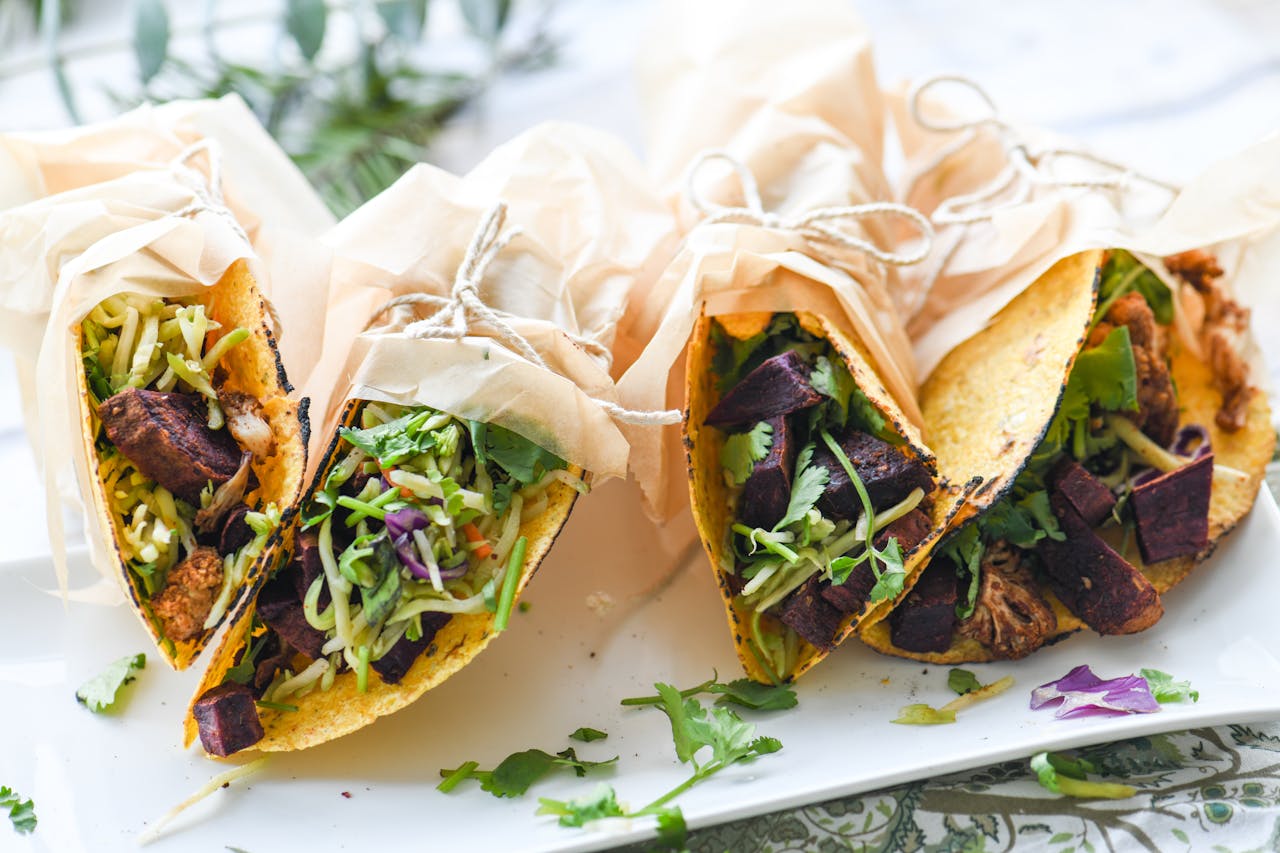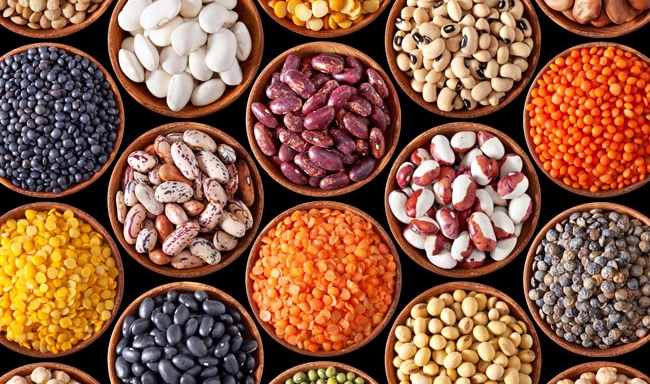Since 1975, the USDA’s Thrifty Food Plan (TFP) has aimed to outline nutritious food and beverage choices for those shopping on a tight budget. Recently, researchers have created a culturally adapted version of the plan, called the Hispanic Thrifty Food Plan (H-TFP). But experts are divided on whether the study is a positive step. Some say it offers helpful nutritional advice, for example, while others are a little more skeptical, particularly of the plan’s emphasis on pork.
What is the Hispanic Thrifty Food Plan?
Designed with funding from the National Pork Board, the H-TFP was recently published in the journal Nutrients. According to the research paper, the new plan is “healthy, affordable, and culturally relevant.” It also “respects the distinctive food patterns of Hispanic communities,” according to a press release.
There are two versions of the H-TFP, but both include high amounts of pork, as well as beans, whole grains, and 100 percent fruit juice. The first version includes pork as a protein source alongside beef and poultry, while the second only includes pork.
“Culturally tailored food plans like the H-TFP help ensure that diverse communities can maintain healthy diets that reflect their food traditions, without sacrificing affordability or nutrition,” said lead researcher Adam Drewnowski, PhD, in a statement. “This model shows that we can preserve cultural food preferences while promoting healthy eating at the same cost as the USDA’s Thrifty Food Plan.”
 Pexels
Pexels
Chris Mohr, PhD, RD, a registered dietician and Fitness and Nutrition Advisor at Fortune Recommends, praised the plan for its focus on affordable nutrition that supports tradition and cultural heritage. He added that while pork and beef do provide essential nutrients such as protein, iron, and zinc, he warned that, given their saturated fat content, “it’s important to balance overall intake.”
Saturated fat can increase the levels of LDL (bad) cholesterol in the body, which, in turn, increases the risk of heart disease and stroke. The USDA advises that people keep their saturated fat intake to less than 10 percent of their daily calories. According to Medical News Today, the cuts of pork with the highest saturated fat content include belly, shoulder, and ribs.
According to the research, a vegetarian or plant-based version of the H-TFP plan “was found to be infeasible” within the budget constraints.
Mohr added that if people want to follow the H-TFP plan with more plant-based sources of protein, they could opt for whole food options like lentils, tofu, beans, and tempeh. “Using these foods could help create a nutritious, affordable vegetarian or vegan Thrifty Food Plan,” he said.
He also noted that “making versions of the Thrifty Food Plan that consider cultural differences, like those in the Hispanic community, helps make sure that the guidelines are relevant and useful for a broader population.”
Destini Moody, a registered dietician and sports nutritionist for Garage Gym Reviews, also sees the study as positive progress. “I’ve always thought that the idea of ‘healthy eating’ has been anglicized for far too long,” she explained. “People of different cultures deserve the right to access not only healthy food, but the education around how to eat healthfully from programs like Thrifty Food Plan just like any other American.”
However, Switch4Good’s director of education Tiffany Bruno, MS, RDN, is critical of the plan’s emphasis on pork. She also believes researchers should be focusing on creating adaptable healthy food plans for everyone, rather than producing individual culturally relevant plans.

“In my professional opinion, this is not as inclusive as the Pork Board (who funded the research to create this plan) thinks it is, and is even counterproductive,” she said. “When we introduce culturally-specific plans, we are further alienating those who don’t fall under this umbrella, as well as diluting the diversity within the broader cultural category.”
Bruno added that creating plans for every culture “would result in hundreds of separate plans to truly address all global dietary patterns.”
The Hispanic Thrifty Food Plan and the National Pork Board
Pork is generally popular among Hispanic and Latinx communities. Popular Mexican dishes include carnitas, for example, which is slow-cooked pulled pork, and chicharron en salsa verde, which is pork rinds in green sauce. Roasted pork belly is a popular Chilean dish, while pernil, or roasted pork shoulder, is a Puerto Rican holiday staple.
The National Pork Board has been trying to appeal to more Hispanic families for a while. Last year, it revealed plans to “execute marketing plans in multicultural markets where pork is popular,” which includes Hispanic communities, it stated. It acknowledged that pork’s saturated fat content is a concern, however, and that many people are gravitating towards plant-based whole foods for their health benefits.
“We know from research that Latino consumers are eating a lot of pork as an ingredient,” said Jose De Jesus, senior director of multicultural marketing at the National Pork Board, in a statement last year. “We also know there’s tremendous affinity for plant-forward diets. We want to meet the consumer where the consumer is. So, if you’re eating lots of veggies, how can pork be part of that?”
 Getty
Getty
BECOME A VEGNEWS VIP: Get exclusive product deals, freebies, and perks galore!
The H-TFP plan does include plenty of plant-based foods, including beans and whole grains, but for some dietitians, like Bruno, it’s not enough.
“Pork and beef are high in saturated fat, which can increase one’s risk of cardiovascular disease. The H-TFP may mean people are turning to these foods more often under the illusion they are healthy, and ignoring their detrimental effects,” Bruno told VegNews.
“Plant-based proteins, such as legumes, should be prioritized in anybody’s diet to promote better health outcomes,” she added. “The study highlights how beans are staple foods in Hispanic cuisine, so they should have more emphasis as a protein source in the H-TFP.”
Indeed, an abundance of research suggests that diets that are higher in plant-based foods and lower in animal proteins are better for our health. Earlier this year, the US News & World Report consulted with more than 40 dietitians before it named the Mediterranean diet as the healthiest diet for the seventh year in a row, largely for its emphasis on plant-based foods.
 Kindel Media | Pexels
Kindel Media | Pexels
Many dietary patterns around the world are similar to the Mediterranean way of eating. In Nicoya, Costa Rica, for example, people eat predominantly plant-based foods. The region is even considered one of the world’s five Blue Zones, which are longevity hotspots where more people tend to lead healthy lives well into their 80s, 90s, and even 100s.
Dan Buettner, the National Geographic explorer who first connected the dots on the Blue Zones, says that in these regions, including Nicoya, meats like pork aren’t really on the menu. Instead, beans are the go-to. “In every Blue Zone I have visited, beans and other legumes were—and still are—a major component of the daily diet,” he told CNN.
For more plant-based stories like this, read:
JUMP TO ... Latest News | Recipes | Guides | Health | Subscribe









